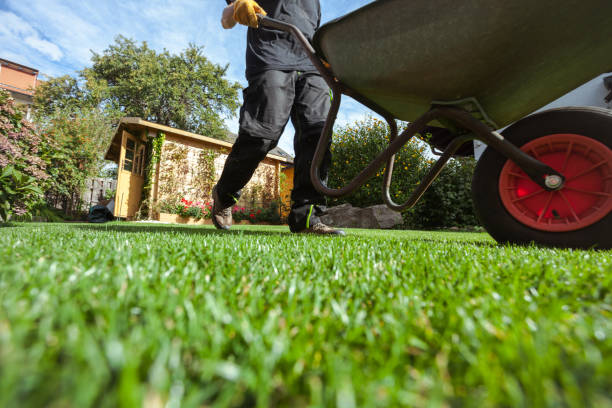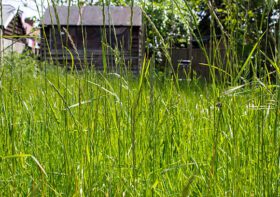The Real Cost of DIY Garden Clearance (And When to Call the Pros)

Garden clearance looks simple enough on the surface. Just grab some tools, fill a few bags, maybe rent a skip, and you’re done, right? But anyone who’s actually tackled a proper garden clearance knows there’s way more to it than meets the eye. The costs add up fast, and not just the obvious ones.
Most homeowners start their garden clearance projects thinking they’ll save money by doing it themselves. The reality hits somewhere around hour three when you’re still wrestling with that massive bramble patch and your back is screaming for mercy.
The Hidden Expenses That Catch People Off Guard
The first shock comes when you start pricing up the equipment. A decent chainsaw runs £150-300 if you don’t already own one. Hedge trimmers, loppers, heavy-duty garden shears – the tools alone can easily hit £200-400 for anything that’ll actually handle tough clearance work.
Then there’s the protective gear. Proper safety equipment isn’t optional when you’re dealing with thorny vegetation, potential hazardous plants, or power tools. Work gloves, safety glasses, steel-toe boots, and protective clothing might seem like small expenses, but they add another £100-150 to your total.
Skip hire costs vary wildly depending on your location and the size you need. A 6-yard skip (which fills up faster than you’d think) typically runs £200-350 for a week. But here’s where it gets tricky – garden waste is bulky. That skip might be physically full before you’ve cleared half your garden, meaning you’re looking at multiple hires or upgrade fees.
The Physical Reality Check
Garden clearance is brutal physical work. Most people underestimate just how demanding it is to cut, lift, and haul heavy vegetation for hours on end. Mature shrubs have extensive root systems. Tree branches are heavier than they look. Even “simple” hedge cutting becomes exhausting when you’re working at shoulder height for extended periods.
The time factor catches everyone out too. What looks like a weekend project often stretches into weeks. Professional clearance teams can tackle in one day what takes most homeowners several weekends to complete. When you factor in your own hourly rate and the value of your free time, suddenly those professional quotes start looking more reasonable.
When DIY Makes Sense (And When It Doesn’t)
Small-scale maintenance clearance is absolutely doable as a DIY project. Trimming back overgrown borders, clearing seasonal leaf buildup, or tidying up after routine pruning – these tasks are well within most people’s capabilities and budgets.
The problem comes with larger projects. If you’re looking at clearing significantly overgrown areas, removing mature trees or large shrubs, or dealing with potentially hazardous plants, the complexity jumps dramatically. Professional services often prove more economical for substantial clearances, particularly when homeowners factor in comprehensive Garden Waste Collection that handles everything from cutting to responsible disposal.
The Disposal Dilemma
Here’s where many DIY projects hit a wall. Garden waste isn’t just regular rubbish – it requires specific disposal methods. Local councils often have restrictions on garden waste collections, with many charging extra for bulk pickup or requiring multiple weeks of regular collections to clear large amounts.
Commercial waste disposal sites accept garden waste, but they charge by weight or volume. A car boot full of hedge clippings might cost £20-40 to dispose of properly. Multiple trips add up quickly, not to mention the fuel costs and time spent driving back and forth.
Some garden waste can be composted or used as mulch, but this only works for certain types of vegetation and requires knowledge about what’s safe to keep on your property. Diseased plants, invasive species, or treated timber need professional disposal to prevent problems spreading.
The Equipment Rental Alternative
Renting equipment instead of buying can reduce upfront costs, but it comes with its own challenges. Tool rental typically runs £30-60 per day for basic equipment, more for specialized tools. The clock starts ticking as soon as you collect the equipment, creating pressure to work faster than might be safe or thorough.
Rental equipment also requires some experience to use effectively and safely. Power tools in untrained hands can cause serious injuries or property damage. Insurance implications get murky too – if you damage your fence or a neighbor’s property while using rental equipment, you might be personally liable for repairs.
Making the Economic Decision
The break-even point between DIY and professional clearance varies depending on project size and individual circumstances. For smaller properties with manageable overgrowth, DIY often makes financial sense. The equipment investment pays off over time, and the physical demands remain reasonable.
Larger properties or severely overgrown areas tip the scales toward professional services. The equipment costs don’t scale proportionally – you need the same expensive tools whether you’re clearing 100 square meters or 1000. But the time investment and physical demands increase dramatically with project size.
Safety Considerations That Cost More Later
Garden clearance involves genuine safety risks that many homeowners overlook. Cutting overhead branches, working on slopes or uneven ground, and handling thorny vegetation all create injury potential. Power tools add another layer of risk, particularly for occasional users.
A serious injury during DIY clearance could result in medical costs, time off work, and ongoing health issues that far exceed the cost of professional services. Professional clearance teams have proper training, insurance coverage, and safety equipment designed for the work they’re doing.
The Professional Advantage
Professional clearance services bring efficiency that’s hard to match as a DIYer. They have the right equipment for each task, teams that can work simultaneously on different areas, and disposal methods already arranged. What takes a homeowner multiple weekends might be completed in a single day.
The expertise factor matters too. Professional teams can identify problem plants, handle hazardous materials safely, and work around existing landscaping without causing damage. They understand local disposal regulations and have relationships with processing facilities that ensure waste is handled properly.
Weather and Timing Factors
DIY garden clearance is weather-dependent in ways that professional services aren’t. Rain delays work and makes conditions dangerous. Seasonal timing affects both plant behavior and disposal options. Many homeowners find their clearance projects dragging on for months due to weather interruptions and competing weekend commitments.
Professional services can work in a wider range of conditions and aren’t limited to weekend availability. They can also time the work to minimize disruption to neighbors and optimize growing conditions for any replanting plans.
The real cost of DIY garden clearance extends far beyond the obvious expenses. When you add up equipment, disposal fees, time investment, and potential risks, many homeowners find that professional services offer better value than initially expected. The key is honestly assessing your project’s scope and your own capabilities before committing to either approach.



